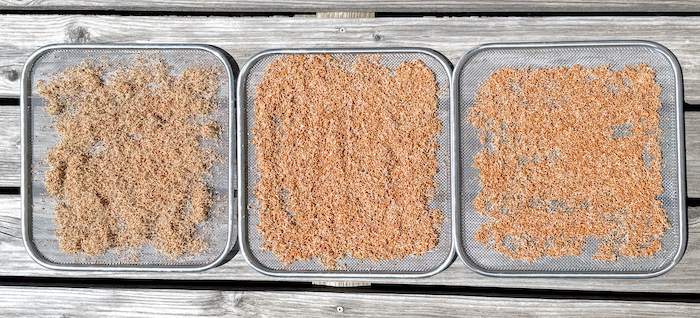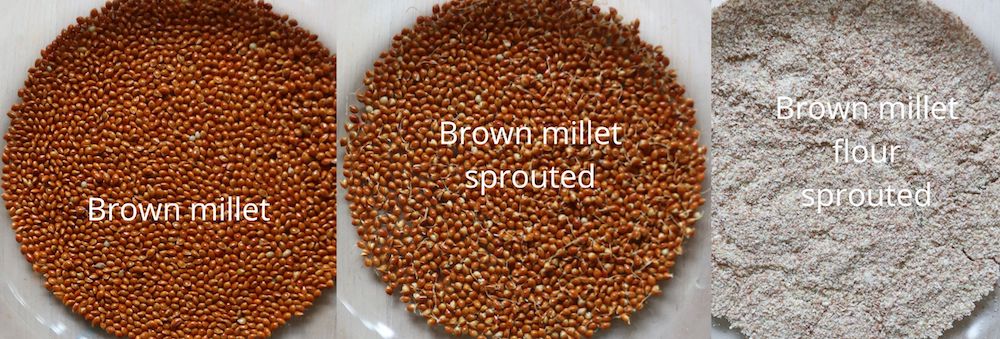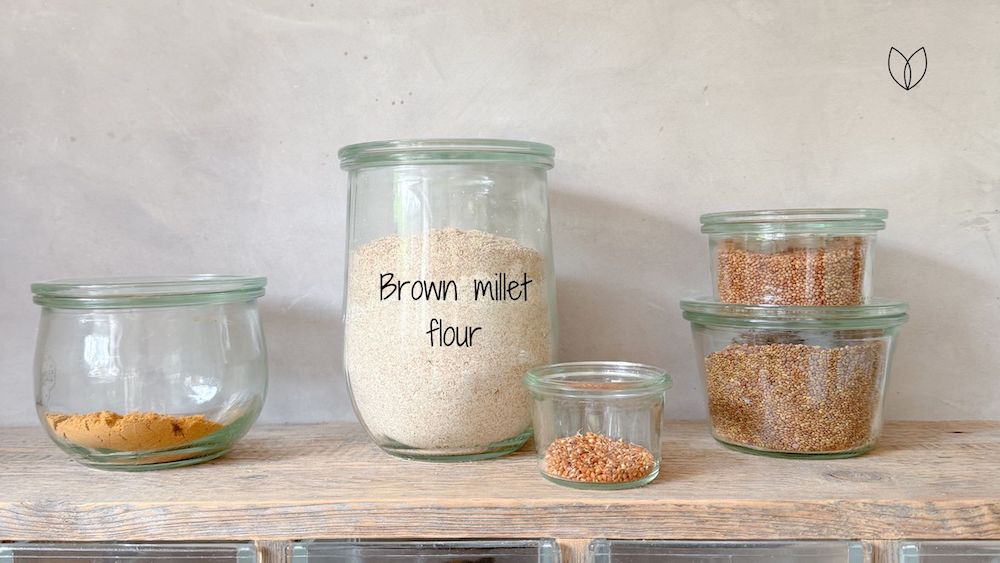Brown millet is considered the oldest bread-making grain in the world and is an important staple food in many Asian and African countries. In recent years, brown millet has been gaining more attention around the world as its health benefits become more widely known. A particularly nutrient-rich form of this grain is sprouted brown millet flour.
The Nutrient Spectrum of Brown Millet
Brown millet is rich in iron, magnesium, phosphorus, zinc, copper, manganese, and silicon, making it an outstanding source of minerals. Its high content of silicon and B-vitamins, especially biotin (vitamin B7), are particularly noteworthy. These nutrients are crucial for the health of connective tissues, bones, teeth, skin, hair, and nails.
Sprouted Brown Millet Flour
To ensure optimal absorption of the nutrient spectrum of brown millet, we recommend sprouting the grain. This process activates enzymes that break down the complex structure of mineral compounds, facilitating the absorption of nutrients in the body.
Furthermore, the sprouting process can also help reduce potential inhibitory factors such as phytic acid. Phytic acid is a compound found in the outer layers of grains that can bind minerals such as iron and silicon and could interfere with their absorption. By breaking down phytic acid during the sprouting process, the bioavailability of these minerals is increased and brown millet is classified as having an alkaline effect.
Sprouted Brown Millet Flour
Preparation
- Choose high-quality brown millet seeds, ideally organic quality, to ensure that they have optimal nutrient content and good germination ability.
- Soak the seeds overnight, well covered with water, to soften the outer layer and start the germination process.
- The germination process usually takes 2-3 days. Rinse the grains twice a day and let them drain in a germination jar.
- When seedlings have formed, they can be dried in various ways, at up to 42°C (or 107 degrees F) in the dehydrator, on a warm heater, or in the sun or in the shade in summer, depending on the temperature.
- The grains must be completely dry to store them.
- It makes sense to grind the seedlings before use so that they don’t oxidize as a whole grain and last longer.
Note:
The optimal serving size of brown millet flour is 1-3 tablespoons per day.


Difference Between Brown Millet and Golden Millet
Golden millet and brown millet come from different varieties of panicle millet and differ in color, nutritional content and use.
Color
As the names clearly indicate, golden millet has a lighter, golden color and brown millet has a darker color that can ranging from brown to dark brown.
Nutrient content
Both varieties are known for their high nutrient content, especially minerals such as iron, magnesium and silicon. The difference in silicon content is significantly large. While golden millet is processed almost exclusively without the peel, the silicon-rich outer skin of brown millet cannot be removed, with the advantage that brown millet is therefore very rich in silicon.
There are around 500 milligrams of silicon in 100 grams of brown millet, while golden millet only contains around 0.4 milligrams per 100 grams.
Uses
Golden millet is cooked similarly to rice and can be eaten with vegetables or as a dessert, for example.
Brown millet, on the other hand, can be eaten raw: In order to optimize the nutrient richness of brown millet, we recommend germinating it and processing it into flour. In this form it’s recommended to consume 1-3 tablespoons per day.

Feel free to tell us about your experience in the comments below!
Would you like to join our unique, based on nutritional sciences and practice-oriented training program for gaining a high level of health?
We are more than happy to inform you about our training program on our website!



0 Comments